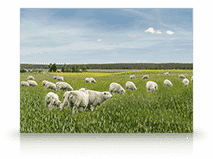Okay, let’s get started on some lists. The first one we’ll start with is usually the most common resolution for the new year….losing weight. We have a great article on how to tell if your pet is overweight, why it’s important and what you can do about it. Now let’s transform those Chunky Monkeys into Skinny Minnies!
The most common nutritional problem in dogs and cats is obesity. Experts estimate that 20-50% of cats and 25-30% of dogs in industrial nations are overweight.
Veterinarians consider cats obese if they weigh 25% or more above normal. There’s a lot more variation in how vets define obesity in dogs, but it’s usually when dogs are 15% or more above optimum weight.
Dogs and cats at their optimum weight usually have an hourglass figure when you look down at them from above – you’ll see a slight indentation in the loin and you should be able to feel (but not see) their ribs. Some breeds of dogs do not have an hourglass figure at their optimum weight.
When cats and dogs are slightly overweight, you can feel a slight covering of excess fat over their ribs, you can see fat on their waist and stomach, and their abdominal area isn’t indented.
In extremely obese dogs and cats, their heavy fat layer is so thick that you can’t feel their ribs. You’ll also see and feel fat deposits on their face, limbs, stomach, and at the base of their tail. In addition, obese cats and dogs have a distended abdomen with no visible waist.
Using the guidelines above can be really helpful in figuring out if your pet is overweight, big-boned, or simply has a lot of fur. Run your hands down their sides and try to feel their ribcage. If you can feel their ribs by applying very light pressure with your hands, they’re probably within their optimal weight range. If you can only feel their ribs by pressing your fingertips in more firmly, they’re probably slightly overweight and could stand to lose shed a little weight. If you can’t feel any ribs at all, they’re probably quite obese and their health is at stake.
Is it a big deal to have an overweight pet?
Yes. Obesity in dogs and cats is a big deal because there are many health problems caused (or made worse) by obesity. This includes a shorter life expectancy, heart problems, arthritis, diabetes, thyroid problems, liver diseases, hypertension, intervertebral disk disease, urinary incontinence, skin problems, increased risk of infections, and even cancer.
There are diseases that can cause animals to gain weight even when you control their diet. This is one of the many reasons why it’s important to consult a veterinarian before and during your attempts to reduce your pet’s weight.
What’s the best weight-loss diet for pets?
You might be surprised to learn that there is no such thing as one perfect weight-management food for all cats or all dogs. It turns out that what works well for one pet, may not work well for another. In fact, there is a lot of variety in “light” pet foods, which you’ll see when reading the Guaranteed Analysis on the food labels. The two basic approaches are (1) high-protein, low-fat and (2) lower-protein, low-fat. Each approach works very well for some pets.
In general, the best weight-loss diets for dogs and cats tend to contain:
• Higher meat protein to prevent muscle loss. (Some large and giant dog breeds need lower protein foods.)
• Low to moderate levels of fat to limit calories.
• Higher fiber to help them feel full. This also helps control blood sugar.
• Lower in calories to help them burn stored fat.
• Supplemental L-carnitine to increase metabolism, maintain lean muscle mass while losing weight, and decrease the risk of developing fatty liver disease.
Veterinarians may recommend very different feeding objectives for pets with certain veterinary conditions.
Before changing the diet of an overweight cat or dog, work with your veterinarian to rule out health conditions that might affect weight and weight loss strategies, such as thyroid disease, diabetes, and even age. Your vet might also provide guidance in choosing the ideal diet for your pet.
Like humans, pets will gradually lose weight when you feed them a diet that meets their daily nutrient requirements with as few calories as necessary. This is why most veterinarians recommend starting off by simply feeding smaller amounts of a dog’s or cat’s usual diet in addition to trying the techniques listed in the next section. If this combination doesn’t work, your vet might suggest switching to a different food.
Research shows that feeding dogs and cats canned or raw food instead of kibble helps them lose weight and keep the weight off. So if you feed your pet kibble and you don’t want to switch 100% of your pet’s diet to a totally different food, try just decreasing the amount of kibble you give them and replacing it with a bit of wet food.
Aside from diet, how can I help my pet lose weight?
There are many ways to help your pet lose weight aside from changing their diet. Establish meal times instead of allowing them to free-feed. Calculate how many cups of food they’ve been eating, then use a measuring cup to very gradually decrease the amount of food you give them. Research has found that even feeding the same amount of food, but dividing it into two or more meals per day, makes it easier for pets to lose weight and keep it off than it is for pets who are fed only once a day or who always have access to food.
Reducing or eliminating treats and snacks can go a long way towards helping them shed extra pounds. Sometimes we don’t realize how many extra calories we’re giving our pets because of these little extras. Most dogs and cats like playtime as much as they like treat-time, so consider reaching for a toy instead of a bag of treats.
Increase their activity by playing more. If your dog is social, take them to a dog park or doggie day care and they will naturally get more exercise by running around with their buddies. Many cats prefer vertical space, so providing more cat perches or adding cat beds to shelves is an easy way to entice them to get more exercise.
Other things to keep in mind when helping your pet lose weight
Go slow. Gradual weight loss is ideal. Cats who lose weight too fast are at risk of developing fatty liver disease.
Dogs and cats should lose no more than 1-2% of their total body weight per week. A 15lb cat should lose no more than .1-.3lb (or 2-5oz) in a week, and a 100lb dog should lose no more than 1-2 lbs in a week.
If you have more than one pet at home, one probably has a weight problem. If so, the one with the weight problem is trying to take control over the food source. Feeding each of them in different areas, such as separate rooms or crates, can usually improve the situation. Also, since overweight pets are often less active and agile, try putting food beyond their reach: on cat trees, windowsills, side tables, or shelves. Find ways for the overweight pet to get exercise when they eat. For pets who eat dry kibble, try using puzzle toys and treat balls instead of food bowls. If they can’t get up high, divide the meals into smaller portions and place the dishes throughout the house. If they are able to jump or climb, put the food in higher places so the pets get a work-out as they approach their food dish. For pets who live in houses with stairs, move their food dishes to different levels of the house so they have to go up and down the stairs every time they want to eat.














